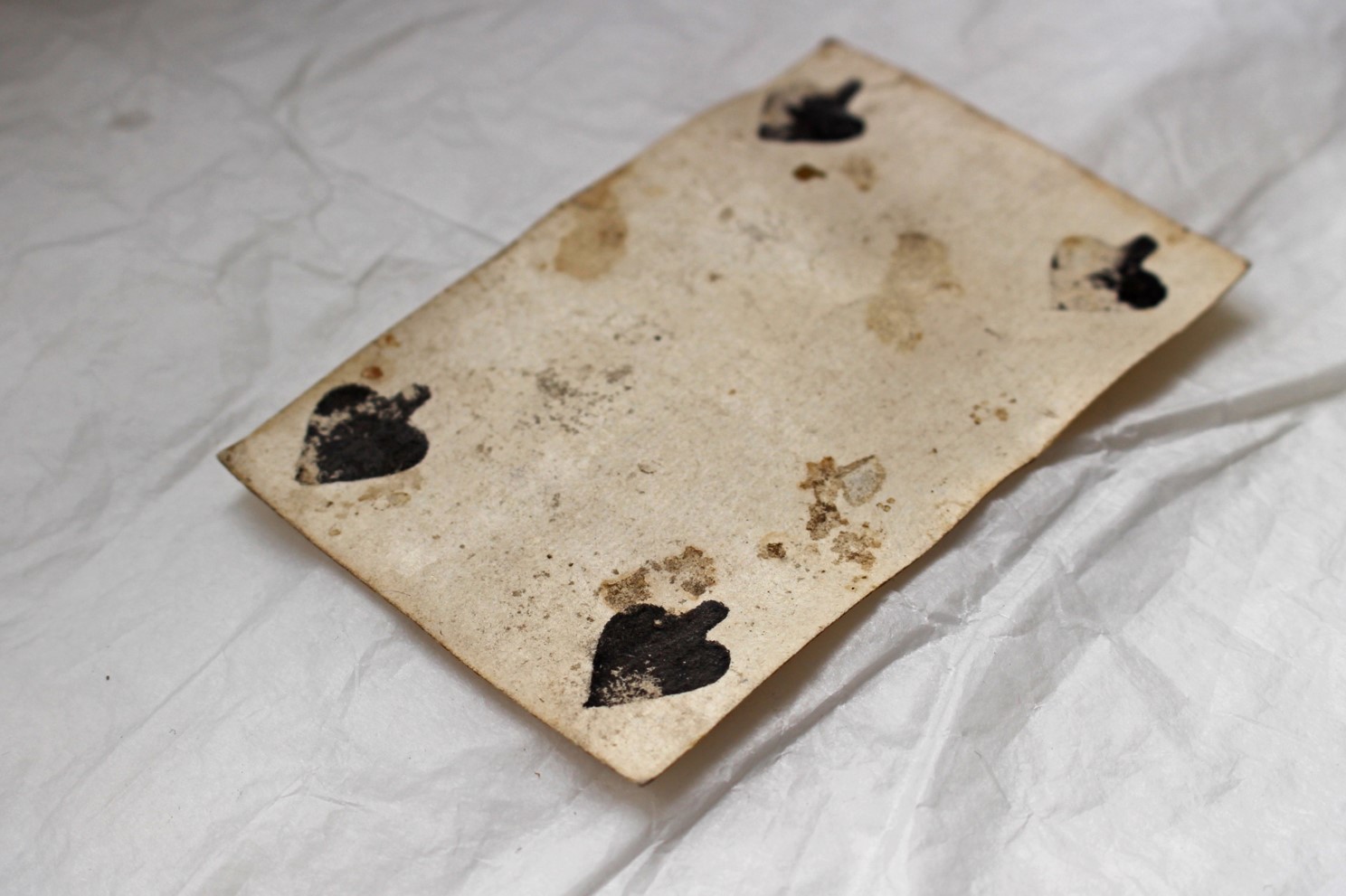
Last week the National Trust kindly asked me to give a talk based on the items in an exhibition in Newton House, Dinefwr, Unlocked: 125 objects from Dinefwr. The choice of objects, most of them connected to Newton House and Dinefwr Park, was up to me. I could hardly fail to include one commonplace but mysterious object found in the House – a playing card. It’s a good example of what I’d call an ‘affective object’, one that carries an emotional weight – it has the power to touch our feelings instantly, no matter how many decades or centuries have passed since it was made.
The card was found under the floorboards in one of the first-floor bedrooms. On the surface – or rather, on the front of its two surfaces – it doesn’t look like anything special. It’s a four of clubs: the club symbol appears in each corner of the face side, without a numeral. Unlike modern playing cards the card doesn’t have rounded corners, it’s a literal rectangle.

Turning the card over, there’s a surprise. First, there’s no picture, the paper is blank. Second, written in ink at the top of one of the long sides of the rectangle, is a verse couplet. The writing isn’t easy to decipher, but seems to say:
Of senses [?] doth [?] my heart torment
Till [?] he returns there is no content.
That’s all, there’s nothing further. The lack of an explanation gives us the freedom to interpret the card and its message as we wish.
Our four of spades doesn’t come from a commercially produced pack of cards. It’s clearly home-made and hand-painted, which accounts for the blank back side. Rounded corners, and ‘double headed’ suit symbols (readable up and down), became common from the middle of the nineteenth century, which may indicate that our card is earlier in date. The handwriting also suggests a relatively early date.

My first thought, on seeing the verse couplet, was that it was taken from a published poem. But search engines fail to come up an incidence of these words in this order, so we’re left wondering whether the (female?) writer of the couplet was also its originator. If so, the sentiments expressed in it – pain of absence and longing for reunion – take on a highly direct, personal significance.
If this is right, could there be any significance in the choice of card? In cartomancy, playing cards were (and are) used to foretell the future. Today it’s the tarot pack that comes to mind in this connection, but in the past the conventional pack was often used. Cartomancers took their cues mainly from the court cards, but numeral cards also carried meanings. The four of spades, according to some, denoted isolation and loneliness, a period of delay or temporary obstruction. That interpretation would tally well with the import of the manuscript words. Their writer, her lover absent, waits for his return, and a release from the ache and agony of separation. The four of spades, perhaps, describes her situation, and maybe foretells an end to her suffering.

Leave a Reply